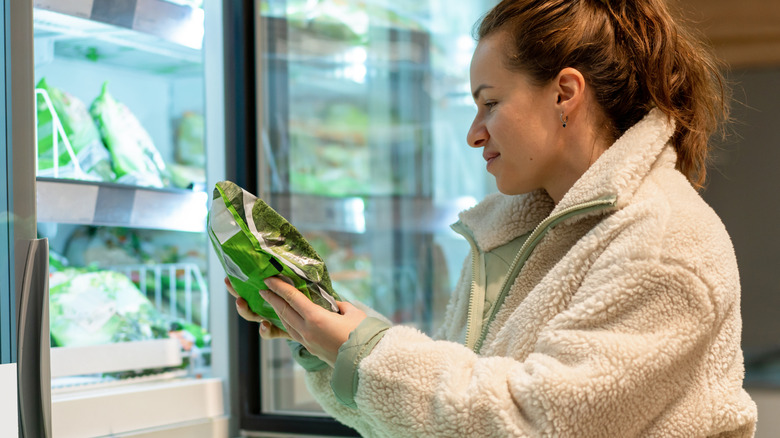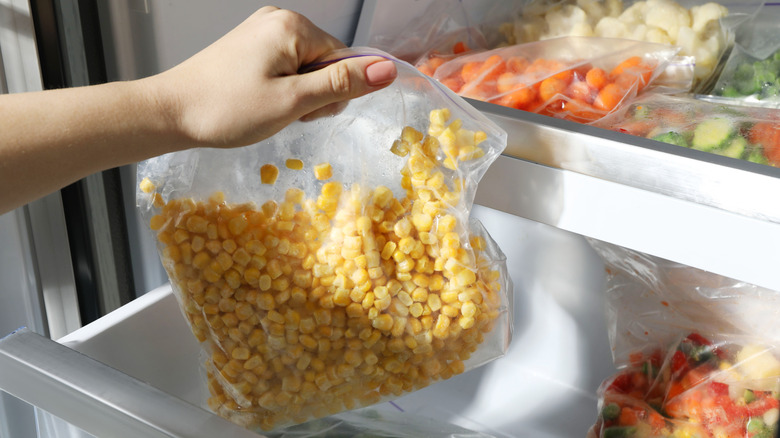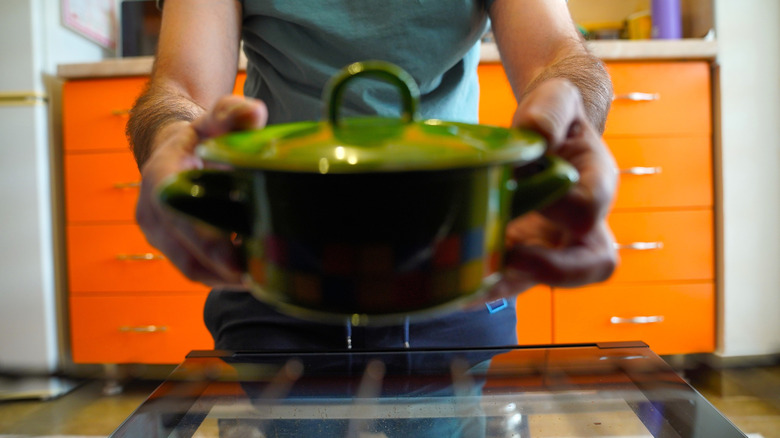Can You Eat Frozen Vegetables Raw?
With the exception of ice cream and popsicles, foods that are stored in the freezer are usually heated before eating. In fact, the frozen dishes or frozen homemade leftovers in your freezer are probably destined for the microwave, oven, or stovetop. And it's often because of safety reasons, not just taste.
Heating up foods that have been frozen makes sense, especially if the foods contain uncooked ingredients that should be cooked. Many frozen foods aren't cooked first; that's why packages of those foods include specific heating instructions. After all, who wants to start throwing up, having diarrhea, or experiencing other symptoms of food poisoning after a meal?
However, there's an exception to the always-reheat rule: frozen vegetables. Whether they're boxed or bagged, frozen vegetables aren't always destined for a pot or pan. Some of them can be eaten raw. You just have to follow a few guidelines to know which ones you can safely thaw and enjoy.
First, consider the vegetable that's been frozen. If you would eat it fresh, you can probably eat it once it's no longer ice-hard. For instance, peas, carrots, and green beans that were frozen right after harvesting and contain no other ingredients can simply be thawed. You can eat them as is, or you can add them to salads or other uncooked dishes.
Safe to eat fresh, usually safe to eat frozen
The reason you can eat some vegetables after they've been frozen is because they've undergone a process called flash freezing. This means they were frozen right after being washed and, typically, heated slightly for a few minutes (a nice-to-know cooking technique you can use at home called blanching). Washing removes unwanted debris, and blanching kills off any lingering bacteria.
Cardiologist Dr. Stephen Kopecky explains (via Mayo Clinic) that eating thawed vegetables that were flash-frozen may be even healthier than eating their fresh counterparts after they've been stored for a few days on grocery shelves or in your refrigerator. "We know once it's picked a few weeks ago, it starts to decay," says Kopecky. "[S]tudies have shown if you can flash-freeze something, it will retain its nutrients better because it retains its cellular integrity so the cells don't get deformed."
You can maximize this type of nutrient retention by freezing vegetables you can't eat right away. For example, if your garden is overflowing with vegetables that can be frozen, you may want to wash, blanch, and freeze them in appropriate containers to eat raw later. Just know that some vegetables won't cooperate with freezing. Vegetables that don't freeze well include lettuce, cabbage, cucumbers, and celery. On the other hand, many vegetables without a high water content look and taste great after freezing, such as corn, broccoli, and squash.
Extra ingredients may mean extra heating steps are required
Before you start thawing and eating all the frozen vegetables in your kitchen, remember that some aren't safe to eat without cooking them first. Say you have a dish that includes vegetables and raw chicken. Freezing doesn't kill the bacteria in the chicken; in fact, the bacteria remains. As food safety expert Trevor Suslow notes (via NPR), freezing bacteria actually prolongs its ability to stay active for a while. "It [freezing] actually does a pretty good job of preserving many of the pathogens and microbes that will cause problems later if thawed out."
Consider using a traditional oven for reheating any vegetable-based meals that you're pretty sure shouldn't be eaten raw. Food science specialist Martin Wiedmann explains (via NPR) that "with a frozen ready-to-cook food, I would always go with the stove, not the microwave," since microwaves don't always heat evenly, which could leave some foods under 165 degrees Fahrenheit (the point where harmful bacteria are killed) even if the plate seems hot.


